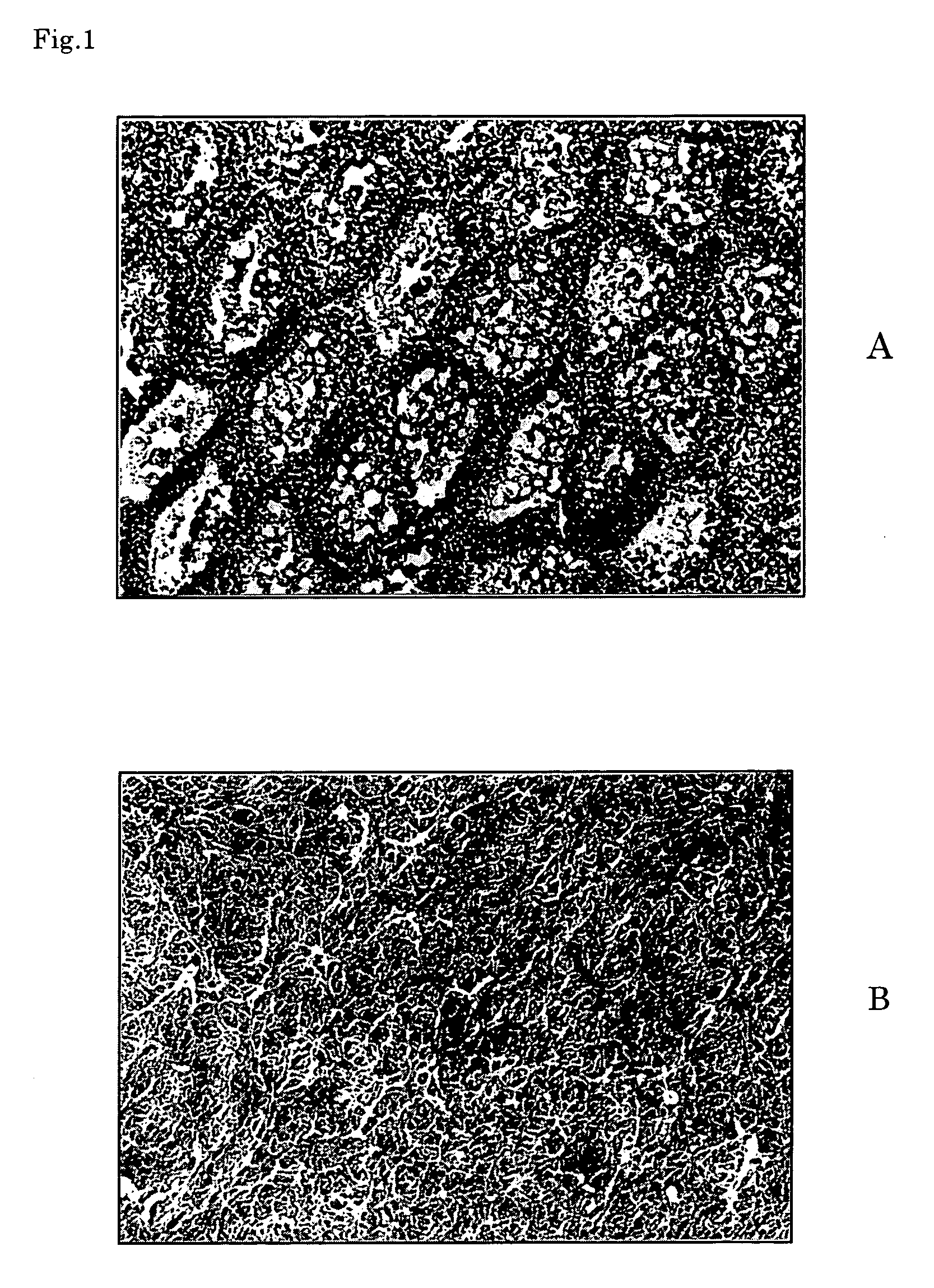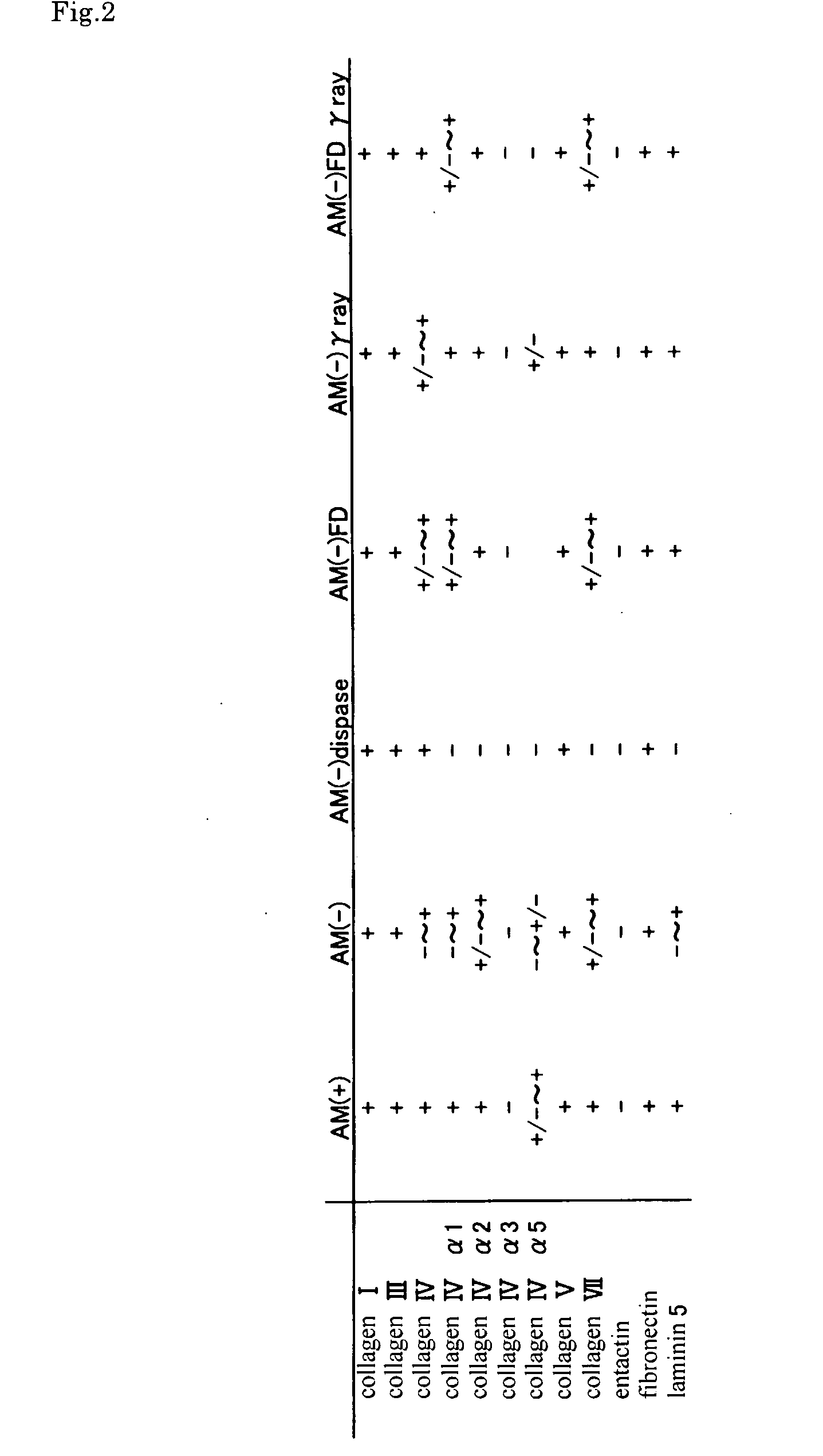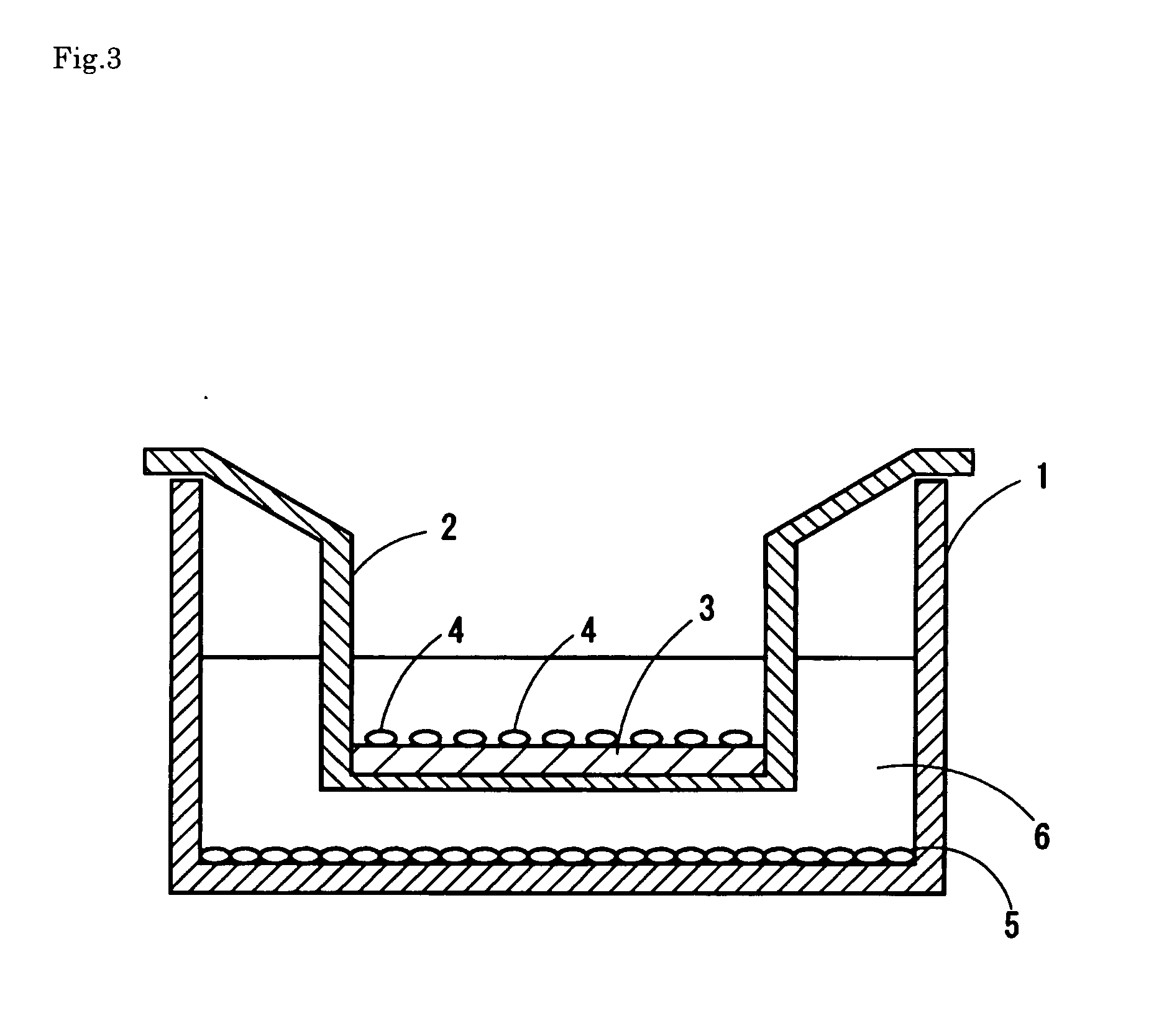Aminion-origin medical material and method of preparing the same
a technology of amniotic membrane and amniotic membrane, which is applied in the field of amniotic membrane medical materials, can solve the problems of amniotic membrane not being resistant to the necessary sterilization process, discoloration of solution, etc., and achieves the effects of facilitating handling, facilitating cell adhesion, and further stratification
- Summary
- Abstract
- Description
- Claims
- Application Information
AI Technical Summary
Benefits of technology
Problems solved by technology
Method used
Image
Examples
example 1
Collection of Amniotic Membrane
[0122] After giving a pregnant woman who does not have a systemic complication and would undergo caesarean section sufficient informed consent together with an obstetrician in advance, amniotic membrane was obtained at the time of the caesarean section in the operation room. The operation was carried out cleanly. In accordance with the operation work, the operators washed hands, and then wore a special gown. Before delivery, a clean vat for obtaining amniotic membrane and physiologic saline for washing were prepared. After delivery, the placenta tissue was transferred to the vat and amniotic membrane tissue was manually detached from the placenta. A portion where amniotic membrane and placenta were strongly attached to each other was separated from each other with scissors.
example 2
Treatment of Amniotic Membrane
[0123] Treatment process of amniotic membrane included: (1) washing, (2) trimming, and (3) storing sequentially in this order. Throughout all the processes, operation is desired to be carried out in a clean draft. For all containers and instruments for use, sterilized ones were used, and for dishes, etc. sterilized disposable ones were used. The obtained amniotic membrane was washed for removing blood component attached thereto and further washed with a sufficient amount of physiological saline (0.005% ofloxacin was added). Then, the amniotic membrane was washed three times in total with a phosphate buffer solution (PBS) containing penicillin-streptomycin (50 IU). Then, the amniotic membrane was transferred into a dish and cut and divided into the size of about 4×3 cm with scissors. After the amniotic membranes were divided, amniotic membranes in good conditions were selected based on the shape, thickness, or the like.
example 3
Storage of Amniotic Membrane
[0124] One cc each of stock solution was placed in 2 cc sterilized cryotube and one sheet each of amniotic membrane, which had been obtained, washed and selected, was placed and labeled, and then stored in a deep freezer at −80° C. For the stock solution, 50% sterilized glycerol in DMEM (Dulbecco's Modified Eagle Medium: GIBCOBRL) was used. The expiration date for use of stored amniotic membrane was determined at 3 months and expired amniotic membrane was disposed of by incineration. Note here that instead of such storing treatment, the following treatment to the epithelium may be carried out.
PUM
 Login to View More
Login to View More Abstract
Description
Claims
Application Information
 Login to View More
Login to View More - R&D
- Intellectual Property
- Life Sciences
- Materials
- Tech Scout
- Unparalleled Data Quality
- Higher Quality Content
- 60% Fewer Hallucinations
Browse by: Latest US Patents, China's latest patents, Technical Efficacy Thesaurus, Application Domain, Technology Topic, Popular Technical Reports.
© 2025 PatSnap. All rights reserved.Legal|Privacy policy|Modern Slavery Act Transparency Statement|Sitemap|About US| Contact US: help@patsnap.com



